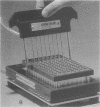Abstract
A sensitive, nonisotopic hybridization assay termed "dual capture" is described. The assay rapidly and specifically detects very low levels of target nucleic acids and organisms. The assay is based on the principles of sandwich hybridization, reversible target capture, and Q-Beta replicase amplification. The assay can be completed in less than 4 h, and in the described model format, it detects Chlamydia trachomatis rRNA or rDNA. Up to 96 samples can be analyzed simultaneously. The assay employs two types of probes: a test-specific capture probe, which mediates the cycling of the target probe complex on and off derivatized magnetic beads, and a replicatable RNA detector molecule containing a sequence complementary to and adjacent to the capture probe site on the target. Following reversible target capture, detection of the signal is accomplished by replication of the detector molecule by Q-Beta replicase in the presence of propidium iodide. A specific assay signal can be detected from as few as 1,000 molecules above the background. In a limited study of 94 urogenital samples the assay detected five of the six culture-positive samples and did not detect the C. trachomatis target in 85 of the 88 culture-negative samples.
Full text
PDF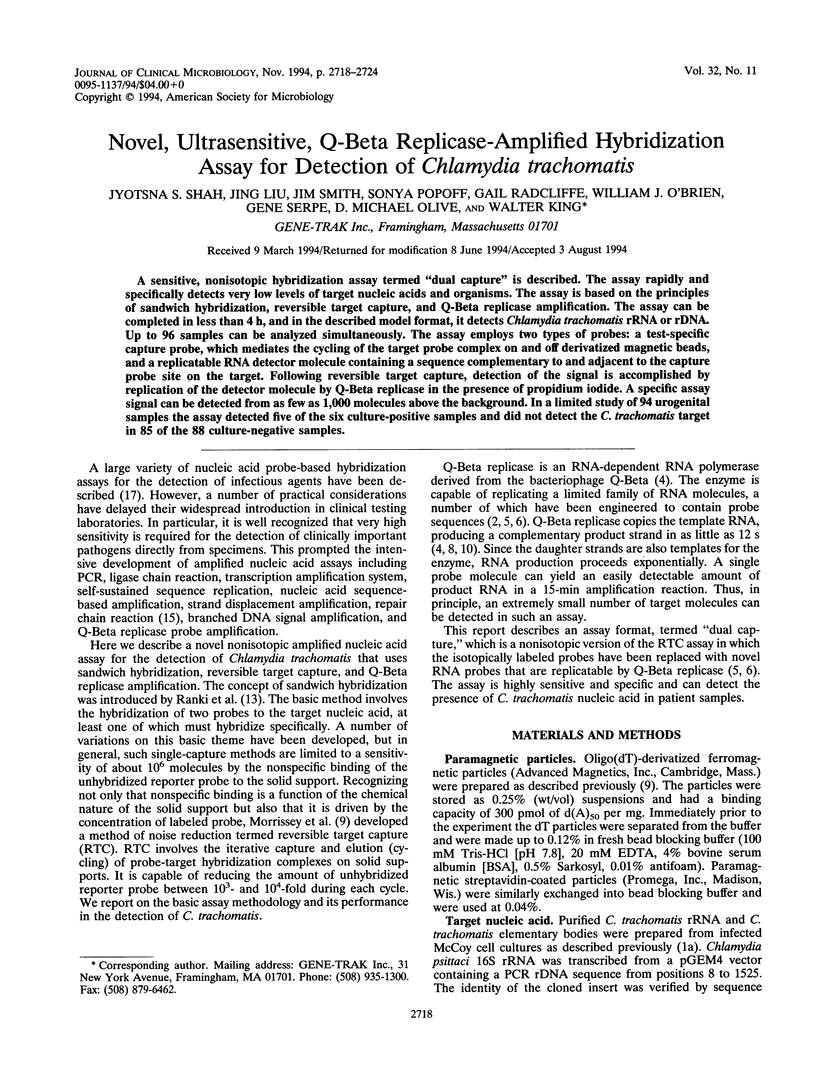
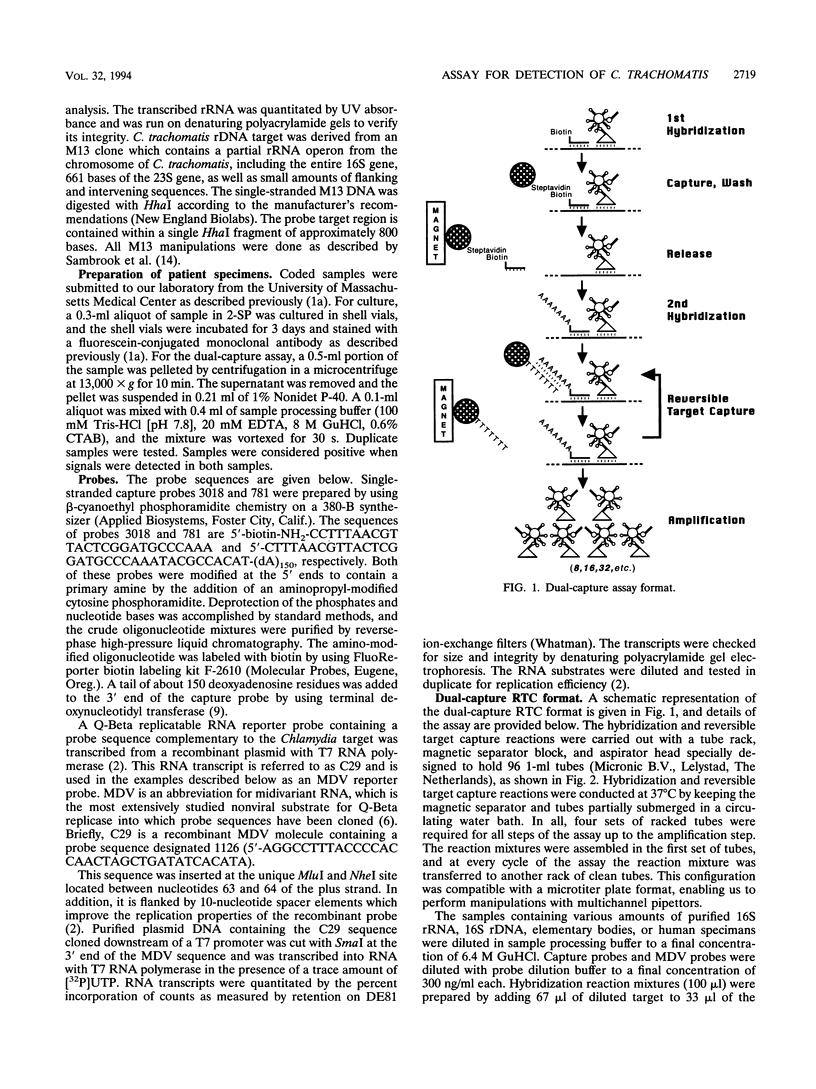
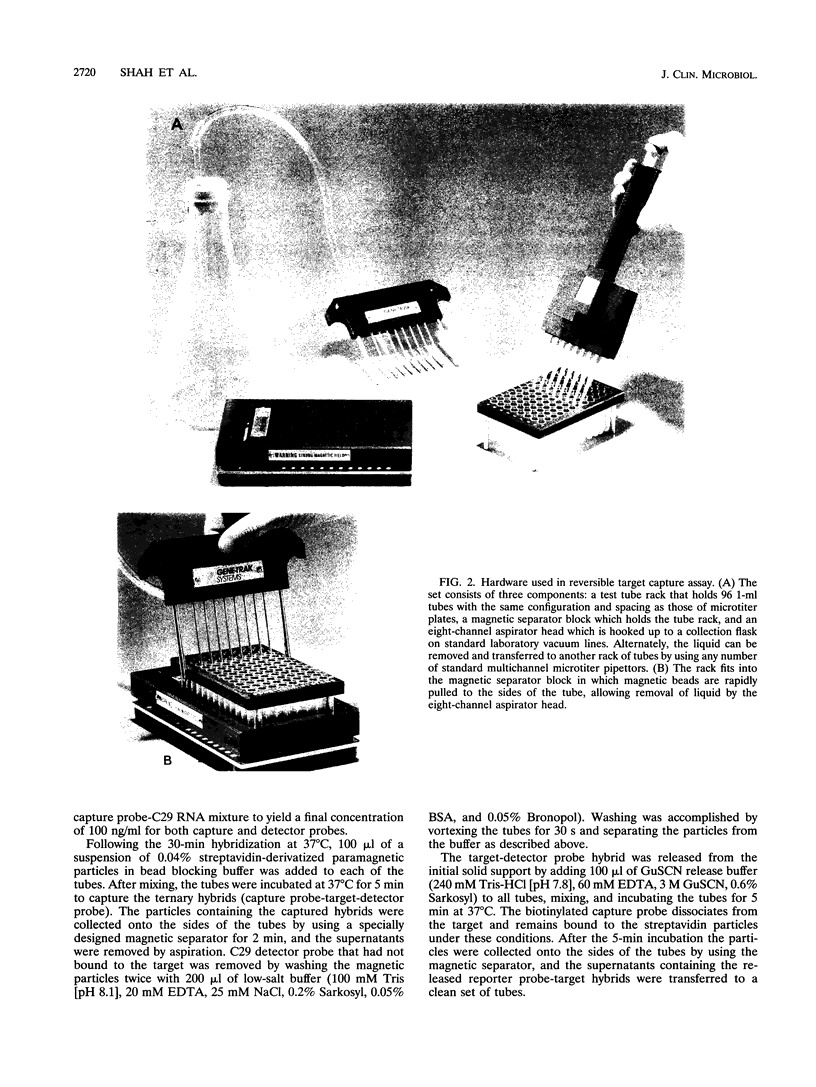
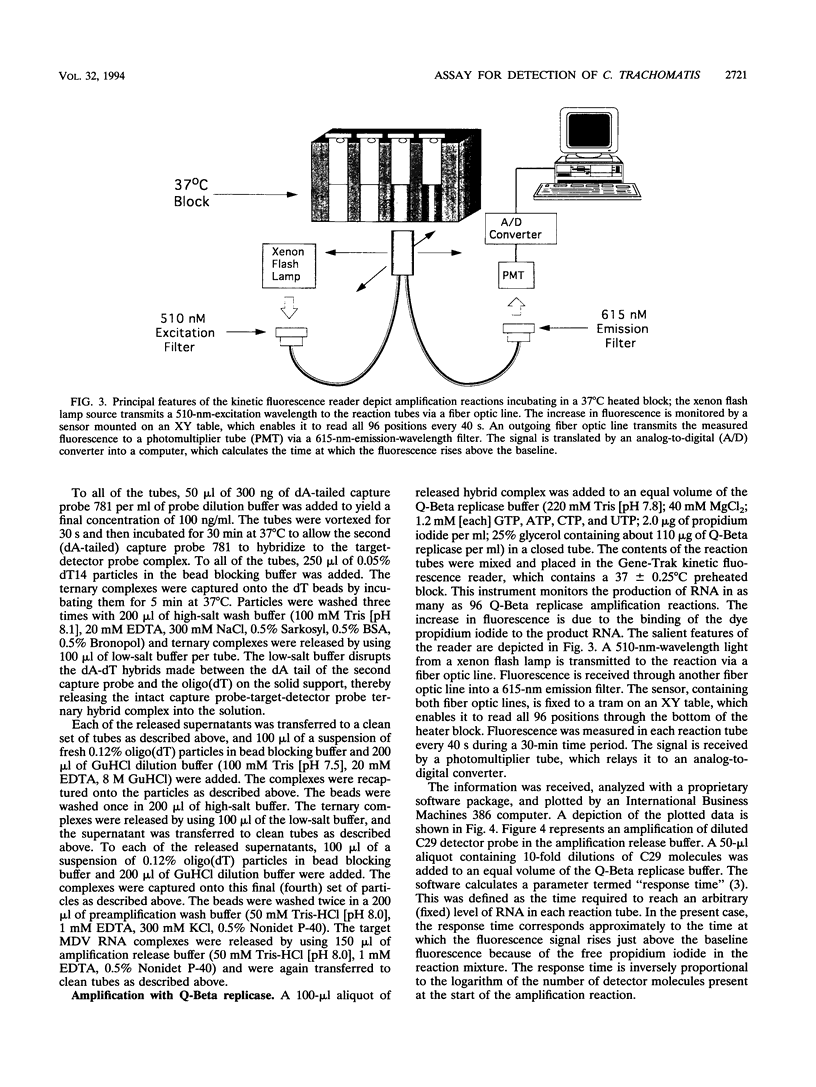
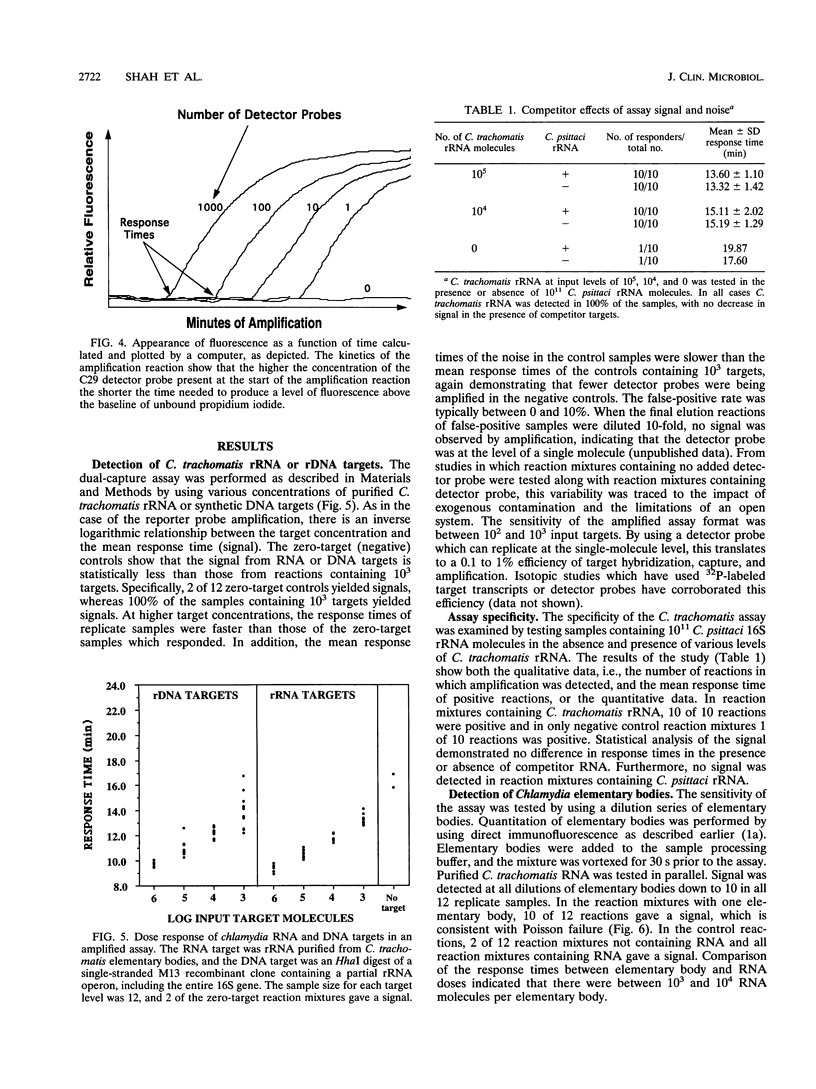
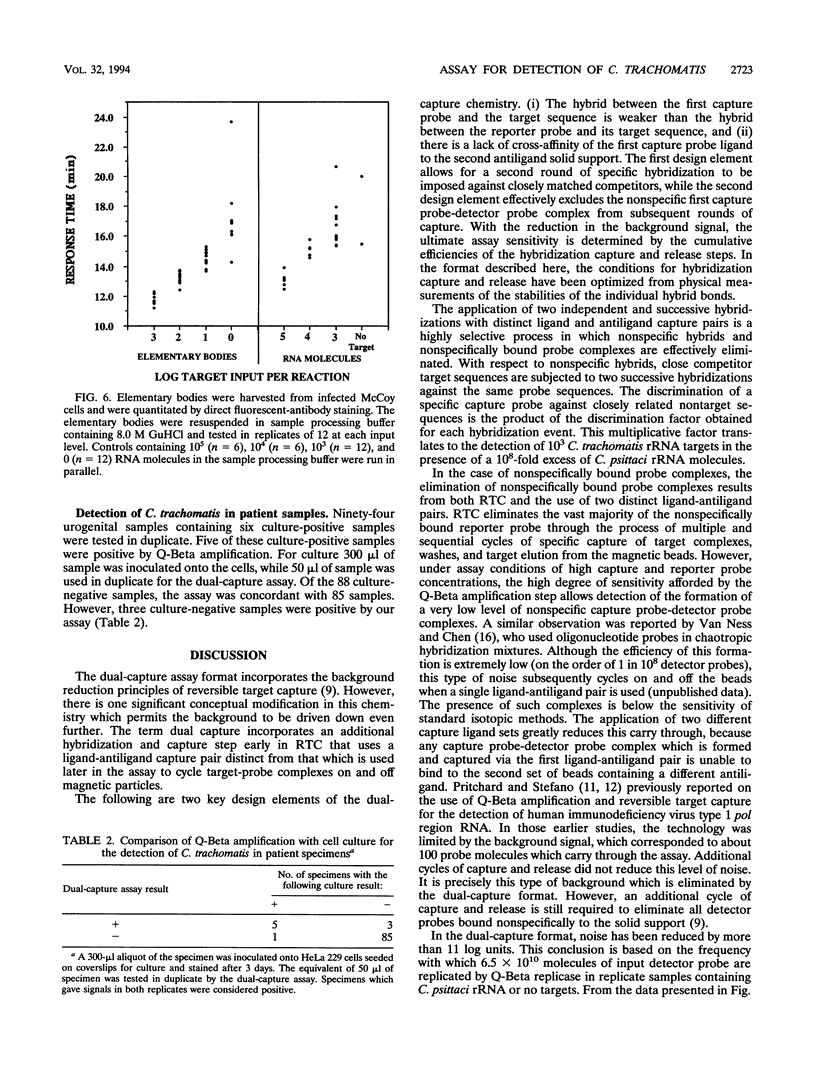
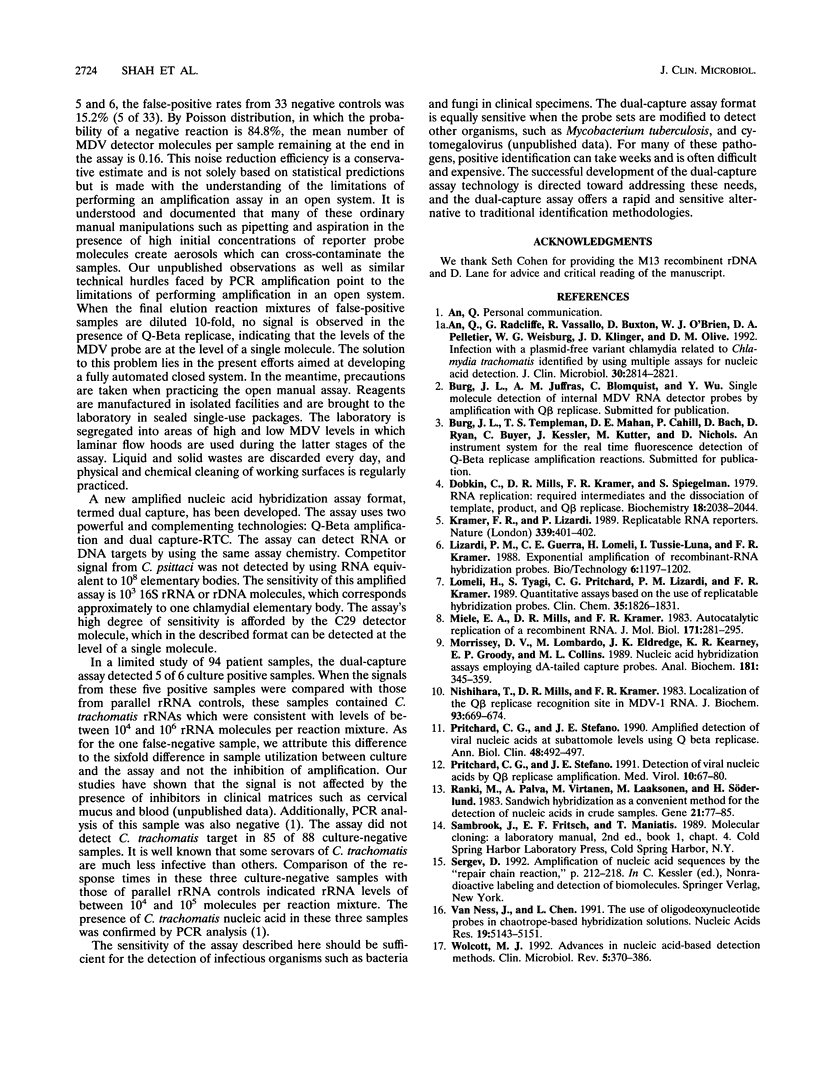
Images in this article
Selected References
These references are in PubMed. This may not be the complete list of references from this article.
- An Q., Radcliffe G., Vassallo R., Buxton D., O'Brien W. J., Pelletier D. A., Weisburg W. G., Klinger J. D., Olive D. M. Infection with a plasmid-free variant Chlamydia related to Chlamydia trachomatis identified by using multiple assays for nucleic acid detection. J Clin Microbiol. 1992 Nov;30(11):2814–2821. doi: 10.1128/jcm.30.11.2814-2821.1992. [DOI] [PMC free article] [PubMed] [Google Scholar]
- Dobkin C., Mills D. R., Kramer F. R., Spiegelman S. RNA replication: required intermediates and the dissociation of template, product, and Q beta replicase. Biochemistry. 1979 May 15;18(10):2038–2044. doi: 10.1021/bi00577a030. [DOI] [PubMed] [Google Scholar]
- Kramer F. R., Lizardi P. M. Replicatable RNA reporters. Nature. 1989 Jun 1;339(6223):401–402. doi: 10.1038/339401a0. [DOI] [PubMed] [Google Scholar]
- Lomeli H., Tyagi S., Pritchard C. G., Lizardi P. M., Kramer F. R. Quantitative assays based on the use of replicatable hybridization probes. Clin Chem. 1989 Sep;35(9):1826–1831. [PubMed] [Google Scholar]
- Miele E. A., Mills D. R., Kramer F. R. Autocatalytic replication of a recombinant RNA. J Mol Biol. 1983 Dec 15;171(3):281–295. doi: 10.1016/0022-2836(83)90094-3. [DOI] [PubMed] [Google Scholar]
- Morrissey D. V., Lombardo M., Eldredge J. K., Kearney K. R., Groody E. P., Collins M. L. Nucleic acid hybridization assays employing dA-tailed capture probes. I. Multiple capture methods. Anal Biochem. 1989 Sep;181(2):345–359. doi: 10.1016/0003-2697(89)90255-8. [DOI] [PubMed] [Google Scholar]
- Nishihara T., Mills D. R., Kramer F. R. Localization of the Q beta replicase recognition site in MDV-1 RNA. J Biochem. 1983 Mar;93(3):669–674. doi: 10.1093/jb/93.3.669. [DOI] [PubMed] [Google Scholar]
- Pritchard C. G., Stefano J. E. Amplified detection of viral nucleic acid at subattomole levels using Q beta replicase. Ann Biol Clin (Paris) 1990;48(7):492–497. [PubMed] [Google Scholar]
- Ranki M., Palva A., Virtanen M., Laaksonen M., Söderlund H. Sandwich hybridization as a convenient method for the detection of nucleic acids in crude samples. Gene. 1983 Jan-Feb;21(1-2):77–85. doi: 10.1016/0378-1119(83)90149-x. [DOI] [PubMed] [Google Scholar]
- Van Ness J., Chen L. The use of oligodeoxynucleotide probes in chaotrope-based hybridization solutions. Nucleic Acids Res. 1991 Oct 11;19(19):5143–5151. doi: 10.1093/nar/19.19.5143. [DOI] [PMC free article] [PubMed] [Google Scholar]
- Wolcott M. J. Advances in nucleic acid-based detection methods. Clin Microbiol Rev. 1992 Oct;5(4):370–386. doi: 10.1128/cmr.5.4.370. [DOI] [PMC free article] [PubMed] [Google Scholar]




